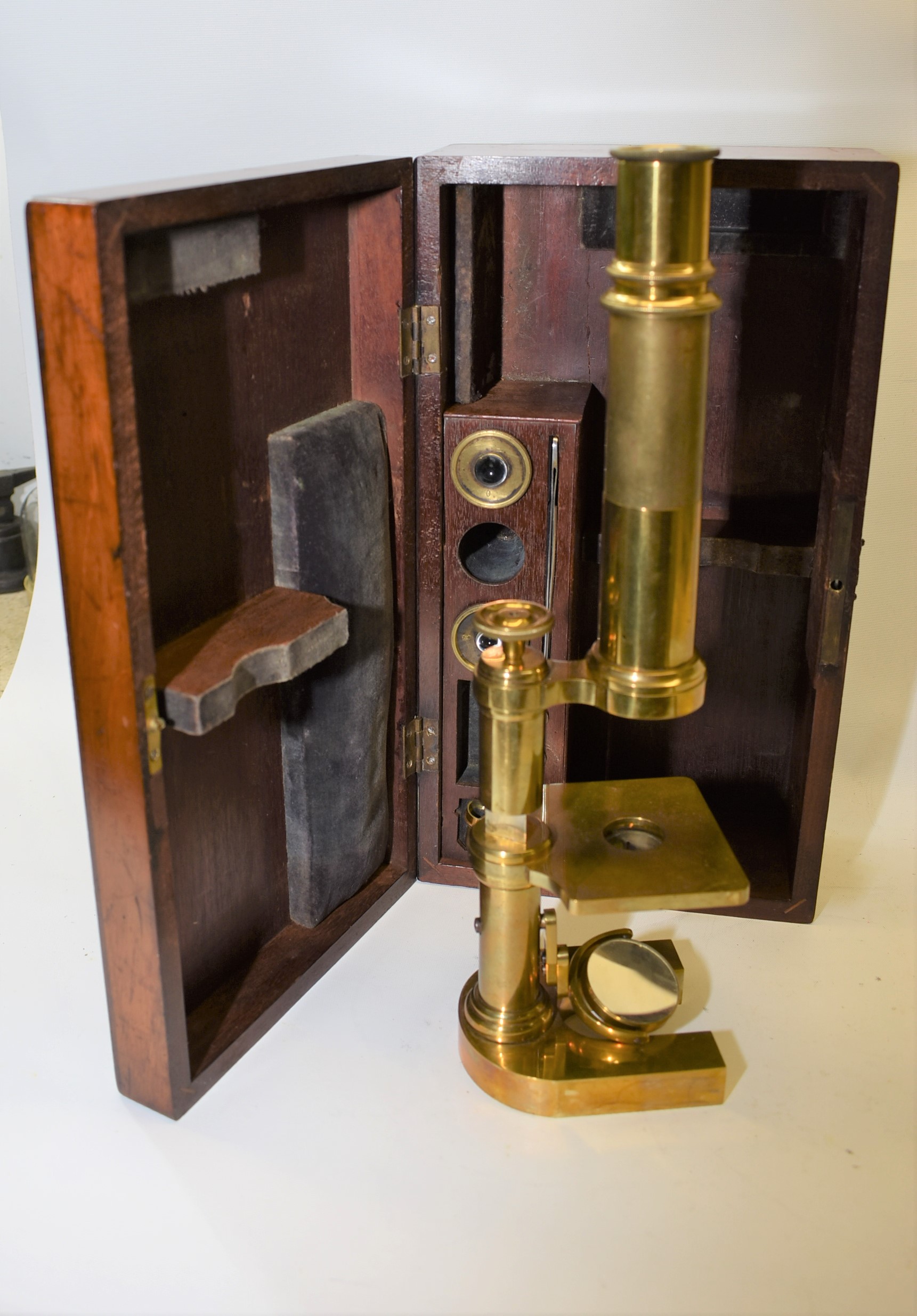Learning about antique microscopes and the discoveries that they enabled mankind to make should prove to be a stimulating subject for anyone that cares about science and history. Prior to the invention of the microscope people could only wonder about what amazing discoveries existed in a world too small to be seen by the naked eye. While there were theories about the microscopic world, that’s all they were theories, since being able to see evidence was necessary to prove a theory to be true. This is why the microscope was such an important discovery, it opened up doorways to scientific discoveries that at one point could scarcely have even been conceived of. The history of the microscope, and the wonders it revealed, is one of the most compelling stories in modern science.

While the exact history of the microscope isn’t known, what is known is that in 1585 the first microscope that uses more than one lens was designed and built by Zacharias Janessen, a Dutch glasses maker. Utilizing more than one lens greatly improved the magnification abilities of his microscope, and also aided in focusing the image. These early microscopes could magnify an object between 20 and 30 times, which at the time allowed for some astounding observations. Today, powerful electron microscopes can magnify up to 50 million times, making their primitive counterparts seem far less impressive. But it’s important not to discount the innovations that led to what we have today, and that means appreciating the genius of those that were able to find ways to allow an invisible, microscopic world to be seen for the first time.
You would think that scientists would leap at the opportunity to use a tool as marvelous as a microscope, but there was a lot of reluctance for quite some time after their invention. While some scientists embraced them, others refused to due to impurities in the glass and flaws in the manufacturing of lenses. This resulted in color changes and distortions which made microscopes unreliable in the eyes of many prominent scientists.
Fortunately, these flaws were corrected around the year 1830 by Joseph Jackson Lister and William Tulley, who made the first reliable microscope that corrected for these faults. Once the reliability of microscopes became well known, their use rapidly spread, opening new avenues of scientific and medical research.
Today, school children learn about cells and how every living thing is made up of billions of them, but less than two centuries ago this common knowledge was not known to medical science. It was around 1838 that two German scientists, Mathias Schleiden and Theodor Schwann proposed that cells were the building blocks of life. What allowed them to come to such a conclusion? The microscope of course! It allowed them to look at life on a microscopic scale and see how living things were constructed in a way that would have been impossible without a microscope.
The microscope also allowed people to start to view disease and illness in a new light. By examining people afflicted with diseases, signs of bacteria and viruses began to emerge. The curiosity of why water could make people sick became less of a mystery when signs of microscopic parasites were discovered.
Without the invention of the microscope then medical science would never have advanced to the point it has today. Its discovery allowed for the very building blocks of our scientific knowledge to be discovered, and only with that foundation have we, as a society, been able to advance as far as we have.
